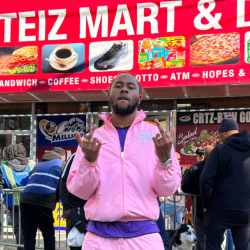Brands wanting to attract younger audiences are understandably preoccupied with moving at the pace of culture. But jumping on trends can be self-defeating. If they backfire, marketers will not only appear out of touch but lacking in understanding of their own brand and its place in the world. Victoria’s Secret’s recent failed feminist ‘rebrand’ is a case in point here. Such a cynical ploy from a brand with a well-documented culture of misogyny was doomed from the outset. The irony of luxury fashion brands, such as Fendi and Louis Vuitton, appropriating a working-class aesthetic isn’t lost on consumers either. Last year Burberry drew criticism for mocking working-class culture by taking over a greasy spoon café during Fashion Week.
Brand reliance on meme marketing as a way to keep up with the cultural conversation is a risky strategy
Brand failures on social media have damaged the reputations of some of the world’s biggest advertisers, including Burger King with its infamous ‘Women belong in the kitchen’ tweet on International Women’s Day. Burger King said the aim of the post was to raise awareness of the lack of gender diversity in the restaurant industry, but any good intentions got lost in the ensuing X/Twitter storm. Meanwhile, the less said the better about Tampax’ disastrous ‘spin’ on a well-used meme, in its tweet: ‘You’re in their DMs. We’re in them. We are not the same’. The outrage sparked by the brand’s post saw the hashtag #BoycottTampax trending. Plundering cultural conversations is often done in the name of brand relevance. But the most relevant brands aren’t those issuing a running commentary on each passing trend or jumping feet first into popular memes or societal movements. To be relevant, a brand must always operate from a deep understanding of its own purpose and its target consumers. Every brand’s customer base is different, and what’s relevant for one audience won’t be for another. For a brand to engage consumers, it must understand their needs and behaviours across everything, from the channels they’re using to what’s influencing their purchasing decisions.
Investing in and responding to customer feedback and data analysis is key here. Instead of constantly reacting to shifts in the wider sphere, brands should focus on the factors specifically impacting their business. For example, the introduction of legislation that increases the age of use for self-tanning drops to 18 is huge news if you’re a self-tan business, but entirely irrelevant if you sell home insurance.
Brands that lose sight of their purpose and their target consumers won’t just fail to drive the cultural conversation, they risk alienating the audience they’re working so hard to attract.
Featured image: Daniel Adeoye / Unsplash































